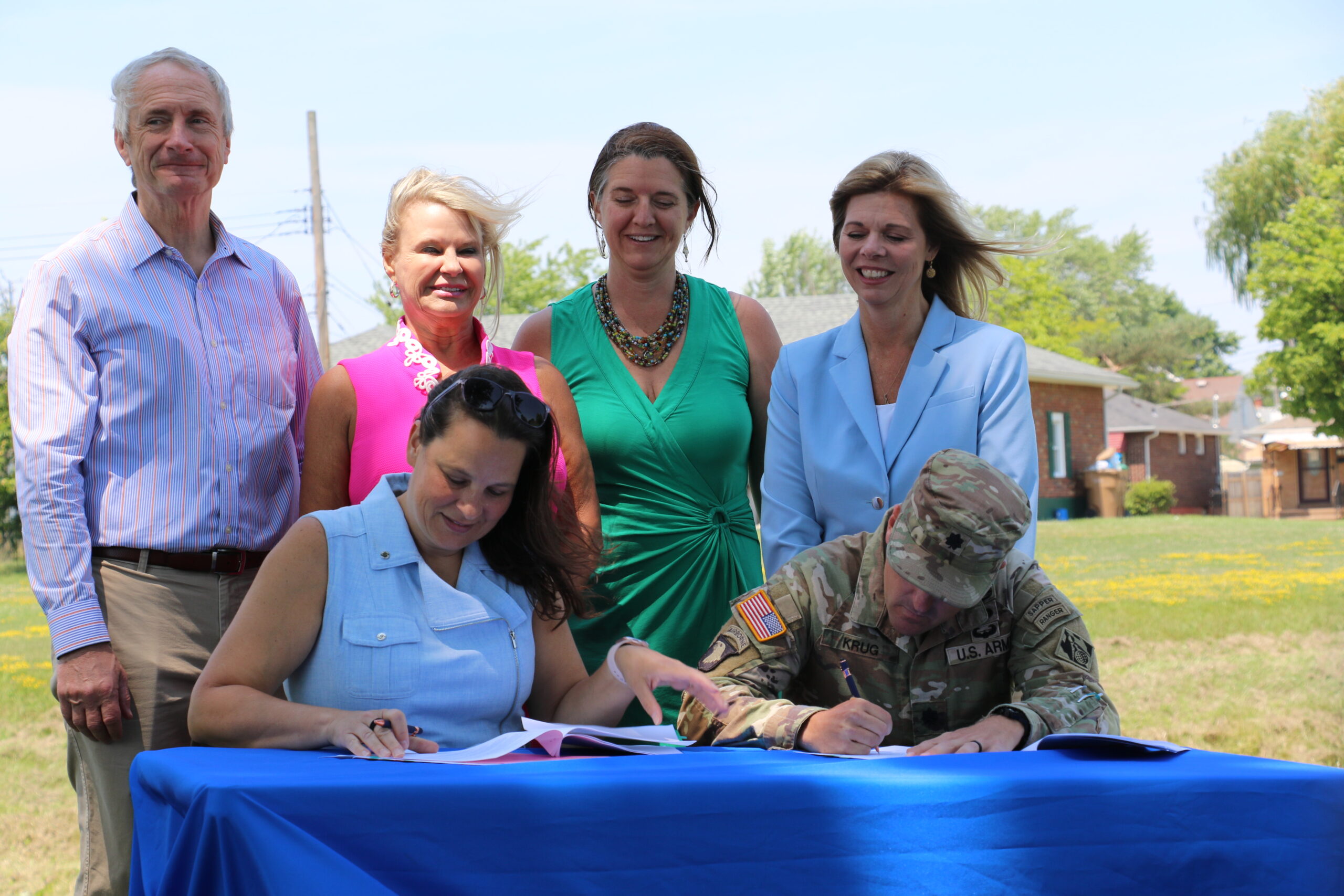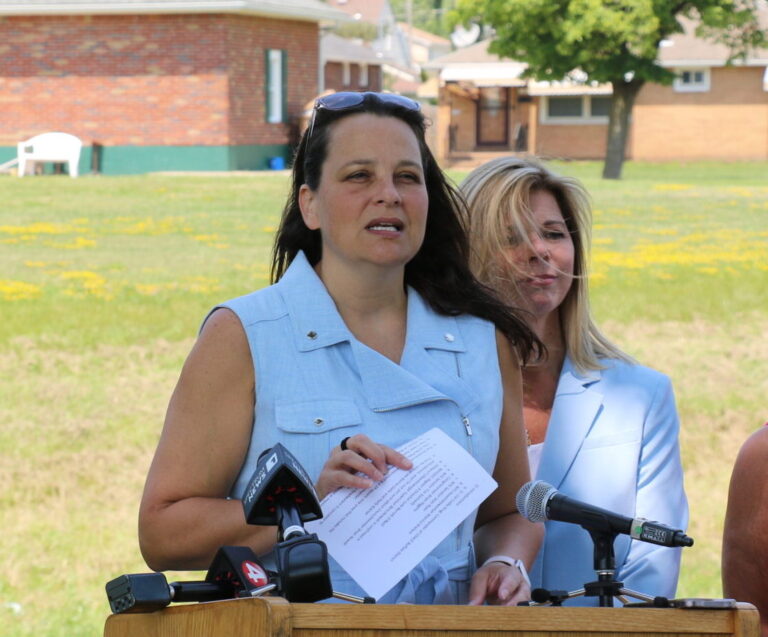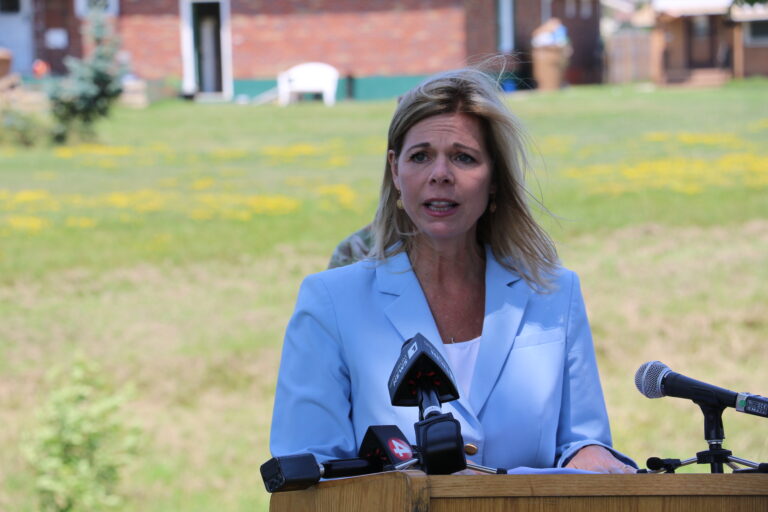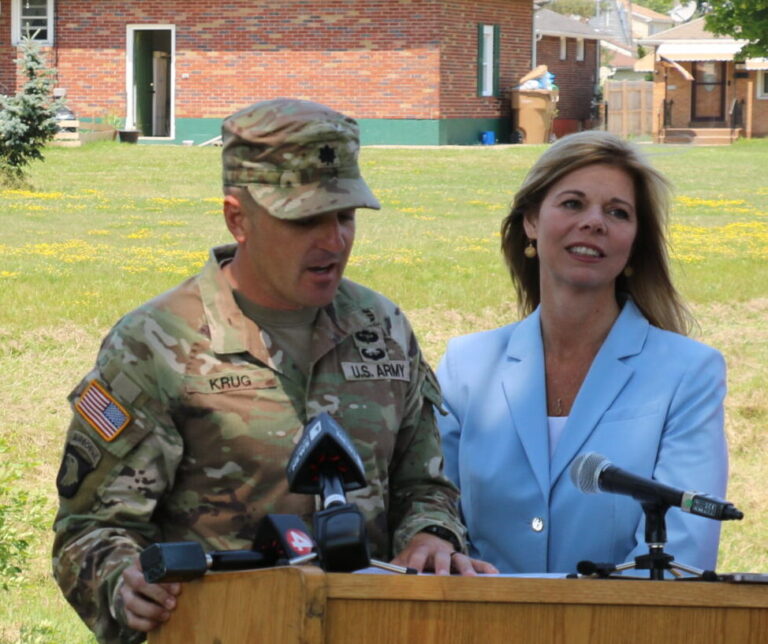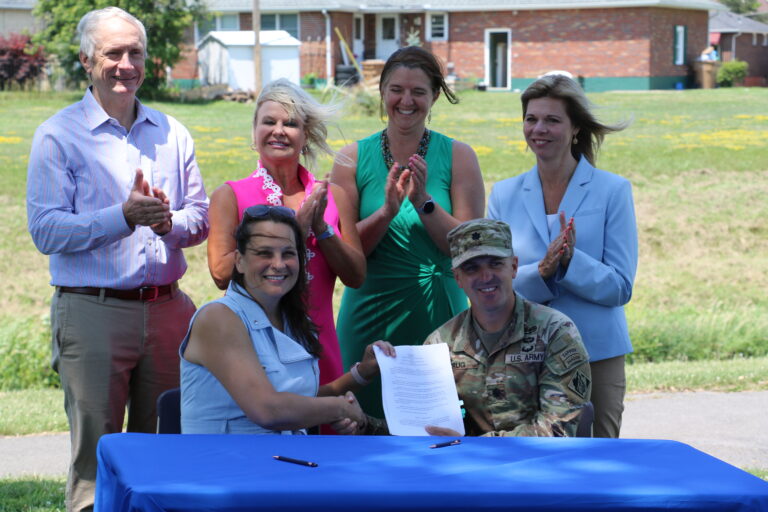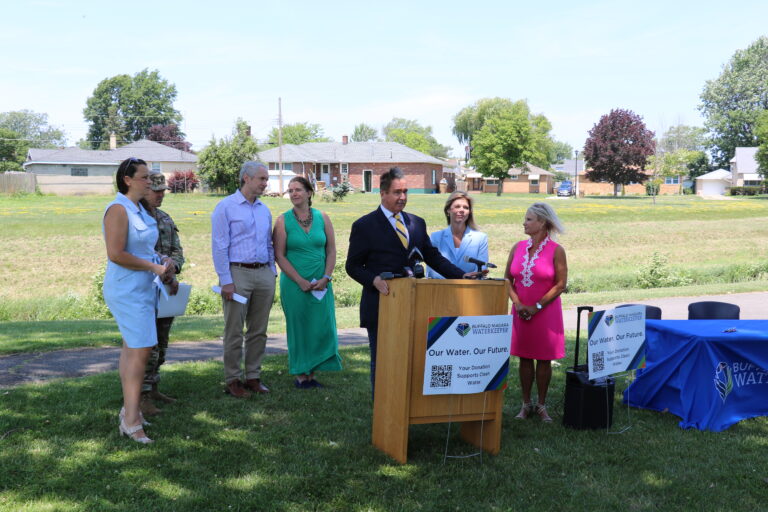CHEEKTOWAGA, NY – On July 11, 2023, Buffalo Niagara Waterkeeper (BNW) and the U.S. Army Corps of Engineers Buffalo District (USACE) signed an agreement on a feasibility study to address degraded conditions in the upper Scajaquada Creek in the Town of Cheektowaga. Due to an historic federal investment in our nation’s water infrastructure, local groups were able to secure this is a once-in-a-lifetime opportunity that will build upon a decade of planning to restore and enhance habitats within this portion of Scajaquada Creek.
Buffalo Niagara Waterkeeper secured the majority of the matching funds for the $600,000 feasibility study from the Margaret L. Wendt Foundation and the Ralph C. Wilson Jr. Foundation, while NYS Assembly Member Monica Wallace and NYS Senator Sean Ryan secured funding through the NYS Department of Environmental Conservation.
Completion of the required feasibility study will then unlock up to $10 million in federal funds towards the restoration of Scajaquada Creek.
“It has been nearly a decade that Waterkeeper and our partners at the Army Corps have worked together to pursue this unique agreement, and thanks to the commitment of Assembly Member Wallace, Senator Sean Ryan, the NYS DEC, the Margaret L. Wendt Foundation and the Ralph C. Wilson Jr. Foundation, we are now able to begin to correct some infrastructure missteps of the past that have led to a degraded Scajaquada Creek”,” explained BNW Executive Director Jill Jedlicka. “Much like our restoration of the Buffalo River over the past three decades, we know that our restoration of Scajaquada Creek will best be achieved through collective action, dedicated partnerships and a community-driven vision. The work that this agreement supports will complement the efforts we recently launched this spring in the lower Scajaquada Creek corridor, and after decades of planning and advocacy, we now have a comprehensive effort underway to finally restore this historically important WNY waterway.”
Buffalo Niagara Waterkeeper Executive Director Jill Jedlicka speaks about the feasibility study for the upper portion of the Scajaquada Creek.
“Since first taking office, I have been focused on cleaning up our local waterways, and in 2017, I worked with Senator Ryan to secure $1 million toward the restoration of Scajaquada Creek,” said Assembly Member Monica Wallace. “I’m thrilled that a portion of that funding will now unlock additional federal and private funds to support healthy ecosystems in a critical local waterway. This project is a shining example of how all levels of government and the private sector can work together to enact positive transformational change.”
NYS Assembly Member Monica Wallace helped secure state funding to bring about the study between Buffalo Niagara Waterkeeper and U.S. Army Corps of Engineers Buffalo District.
Under the authority provided by Section 1135 of the Water Resources Development Act of 1986, the USACE may “plan, design and build modifications to existing USACE projects, or areas degraded by USACE projects, to restore and enhance habitats for fish and wildlife”. The 1135 project funds will offset previous ecosystem degradations attributed in part to USACE Flood Risk Management projects (FRM) in the Western New York region. The FRM project that will be addressed with this new funding was originally constructed between 1977 and 1981, impacting approximately six miles of the creek channel upstream of Pine Ridge Road in the Town of Cheektowaga.
At the time, the FRM project features included culvert removals and replacements, bridge removals and replacements, sanitary sewer manhole floodproofing, channel enlargement, low embankments and levees, miscellaneous drainage structures, diversion channels, channel protection, and vegetative covers. Unfortunately, today, creek channelization, degradation of water quality, altered flow regimes, loss of wetlands and riparian habitat, and proliferation of invasive species are some of the impacts USACE has confirmed arose in part from the original project. The new project announced today looks to identify and implement solutions to these challenges and to restore the ecosystem of this part of Scajaquada Creek.
Click to view larger image
BNW and USACE will begin with the Scajaquada Creek Flood Management Feasibility Study, focusing on the development of engineering solutions that would result in ecosystem improvements throughout the Scajaquada Creek watershed, such as restoring natural stream and riparian functions, re-establishing of wetland habitat, invasive species management, and improving native plant communities. Once complete, this work can:
· Re-establish wetlands in project area along Scajaquada Creek.
· Improve riparian habitat including improving the diversity of native species within the stream corridor.
· Slow stormwater runoff reaching Scajaquada Creek in the project area.
· Retain sediment and pollutants from reaching Scajaquada creek in the project area.
“This Feasibility Study is a shining example of strong partnerships in the Buffalo community,” said Lt. Col. Colby Krug, Commander of the USACE Buffalo District. “The Army Corps of Engineers cultivates and relies on relationships like we have with Buffalo Niagara Waterkeeper because we do not accomplish success by ourselves.”
Lt. Col. Colby Krug, Commander of the USACE Buffalo District, details the plan for the next two years to look at how to best improve the Scajaquada Creek.
DEC Region 9 Director Julie Barrett-O’Neill said, “Scajaquada Creek is an important tributary to the Niagara River. Over the last century, alterations to the creek, including development, channelization, and sewer overflows, have degraded water quality and ecosystem health. An all-hands-on-deck approach aimed at restoring the Scajaquada Creek watershed’s natural functions will be critical to improving the future heath of this vital waterway and DEC applauds Buffalo Niagara Waterkeeper, the U.S. Army Corps of Engineers, and our state and local partners in the milestone announced today and the ongoing work to protect Scajaquada Creek and the surrounding community.”
“Thanks to the tireless efforts of local advocates and a renewed statewide focus on environmentalism and addressing the mistakes of past generations, the state of Western New York’s waterways is finally beginning to receive the attention it deserves,” NYS Senator Sean Ryan said. “Unlocking this federal funding will position us to reverse decades of degradation and restore habitats for local wildlife along this portion of Scajaquada Creek. The people of Buffalo deserve a Scajaquada Creek that is swimmable and fishable, and this study is a milestone that represents significant progress toward the ultimate goal of getting the entire creek back to its former glory. That overarching project is a massive undertaking that will require many more years of collaboration and consistent attention, and I am thankful to have Buffalo Niagara Waterkeeper and my colleagues in government as passionate partners in these efforts.”
“Scajaquada Creek is a critical freshwater resource connecting our community to the Great Lakes, but actions taken in recent history have degraded the Creek’s habitat, water quality, shoreline, and impacted surrounding communities. We are looking to replicate Buffalo Niagara Waterkeeper’s success in remediating the Buffalo River at Scajaquada Creek, ” said Congressman Brian Higgins. “Thanks to the Bipartisan Infrastructure Law we are in the process of making historic investments in our water systems nationwide. State funding, secured by Assemblymember Wallace and Senator Ryan, combined with $250,000 in federal resources utilized by the U.S. Army Corps of Engineers Buffalo District, and generous support from the Wendt Foundation and Ralph Wilson Jr. Foundation takes an important step toward restoring Scajaquada Creek and supporting a healthier future in the Western New York community.”
“We know that any investment in our water infrastructure is a direct investment in improving our waterways. I’ve been proud to work alongside municipalities like the Town of Cheektowaga since I took office to secure more than $20 million in state grants and more than $15 million in zero-interest loans to help facilitate sewer improvements and upgrade aging infrastructures,” said NYS Senator Tim Kennedy. “The future of our environmental health and the state of our waterways depends upon the actions and the choices we make today. Today’s announcement is a reflection of the progress that has already been made, and I thank my state and federal colleagues and our regional advocates for remaining deeply invested in seeing these improvements continue.”
Buffalo Niagara Waterkeeper Executive Director Jill Jedlicka and Lt. Col. Colby Krug, Commander of the USACE Buffalo District, show off the agreement to study the upper portion of the Scajaquada Creek.
The Feasibility Study will take approximately two years, and once completed, will unlock in phases the “Continuing Authorities Program (CAP)” Section 1135 funding for up to $10 million to implement ecosystem restoration in the Scajaquada Creek watershed.
Beneficiaries of the study and ultimate restoration efforts will include numerous communities in the 13-mile Scajaquada Creek watershed including residents in the Town of Cheektowaga, visitors and users of the parks system, and residents in downstream communities in the City of Buffalo. This is in addition to the ecosystem improvements in the Creek anticipated throughout the sub-watershed.
Congressman Brian Higgins talked about the importance of a revitalized Scajaquada Creek for the community.


